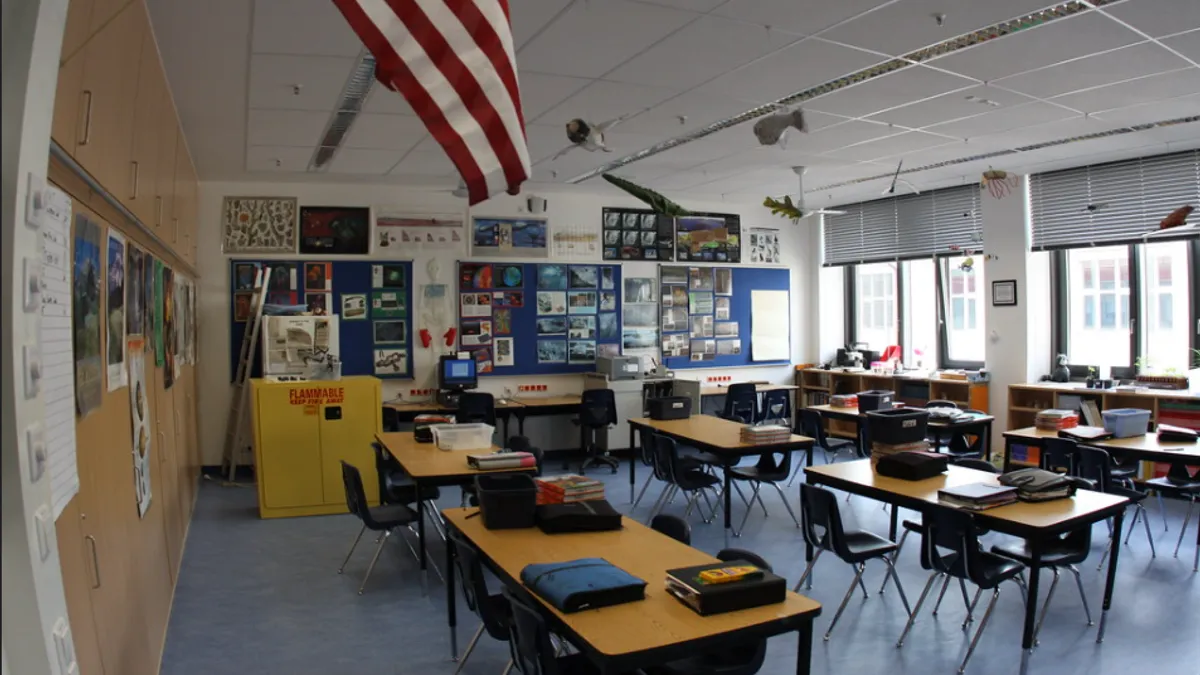Dive Brief:
- A survey by the School Superintendents Association (AASA) reveals that school districts across the country don't plan to spend much of their American Rescue Plan funds on facilities renovations or new construction.
- Close to half of districts indicated they would spend no more than 10% of ARP funding on school facilities improvements, while 16% of districts said they would spend between a quarter to half of ARP funding on such improvements.
- About 25% of respondents indicated the 2024 spending deadline was an obstacle in using the ARP funds for infrastructure and construction. Although reasons varied slightly, the most common issue identified was finding contractors willing and able to take on projects given continuing supply chain disruptions.
Dive Insight:
Congress directed close to $200 billion to state and local education agencies in 2020 and 2021 to help reopen schools battered by COVID-19 through the ARP. The plan, signed into law by President Joe Biden in March, directly addresses pandemic-related student learning recovery.
The breakdown among survey respondents found that:
- 45% of districts plan to spend between 1% and 10% of ARP funding on school facilities improvements.
- 13% of districts plan to spend between 11% and 15% of ARP funding on school facilities improvements.
- 17% of districts plan to spend between 16% and 25% of ARP funding on school facilities improvements.
- 16% of districts plan to spend between 26% and 50% of ARP funding on school facilities improvements.
But ARP funding alone is not enough to remedy the nation's school infrastructure, said Sasha Pudelski, AASA advocacy director. Other solutions, such as the Reopen and Rebuild America's Schools Act, will be vital in supporting these projects.
The Reopen and Rebuild America's Schools Act, introduced by Sen. Jack Reed (D-R.I.), pledges to invest around $130 billion in public elementary and secondary schools.
"We desperately need Congress to pass the Rebuild America's Schools Act, which would provide $100 billion in direct aid for new facilities projects," said Pudelski. "While ARP money can be utilized for school facilities, we are underinvesting roughly $80 billion a year behind where we should be in school facilities, so we need a significant federal uptick in spending to get us on track."
High prices, high demand
A number of AASA survey respondents stated they were discouraged from using ARP funding to invest in facilities updates given how inflated prices are because of demand. Suburban districts were less likely than urban and rural districts to indicate they would be using ARP funding to renovate and build school facilities over the next three years.
"[It's] unclear as to whether we will see a surge [in school construction projects],"said Pudelski. "Supply chain issues, shortages and inflationary prices are making it challenging for districts to invest in construction with ARP funding."
In the survey, nearly half of urban districts and two-thirds of suburban districts indicated they would spend less than 10% of ARP funding on construction or other infrastructure improvements. Rural districts were much more likely than suburban and urban ones to spend more than 25% of their ARP funding on facility enhancements, according to the report.
Rural districts' ARP allocations were much smaller than those for urban districts, which could be a reason why they are spending a larger percentage of these funds on construction and facility improvements









 Dive Awards
Dive Awards






